Fine-Tuning Convolutional Neural Networks: A Comprehensive Guide and Benchmark Analysis for Glaucoma Screening
Amed Mvoulana,
Rostom Kachouri,
Mohamed Akil

Auto-TLDR; Fine-tuning Convolutional Neural Networks for Glaucoma Screening
Similar papers
A Systematic Investigation on Deep Architectures for Automatic Skin Lesions Classification
Pierluigi Carcagni, Marco Leo, Andrea Cuna, Giuseppe Celeste, Cosimo Distante

Auto-TLDR; RegNet: Deep Investigation of Convolutional Neural Networks for Automatic Classification of Skin Lesions
Abstract Slides Poster Similar
Investigating and Exploiting Image Resolution for Transfer Learning-Based Skin Lesion Classification
Amirreza Mahbod, Gerald Schaefer, Chunliang Wang, Rupert Ecker, Georg Dorffner, Isabella Ellinger
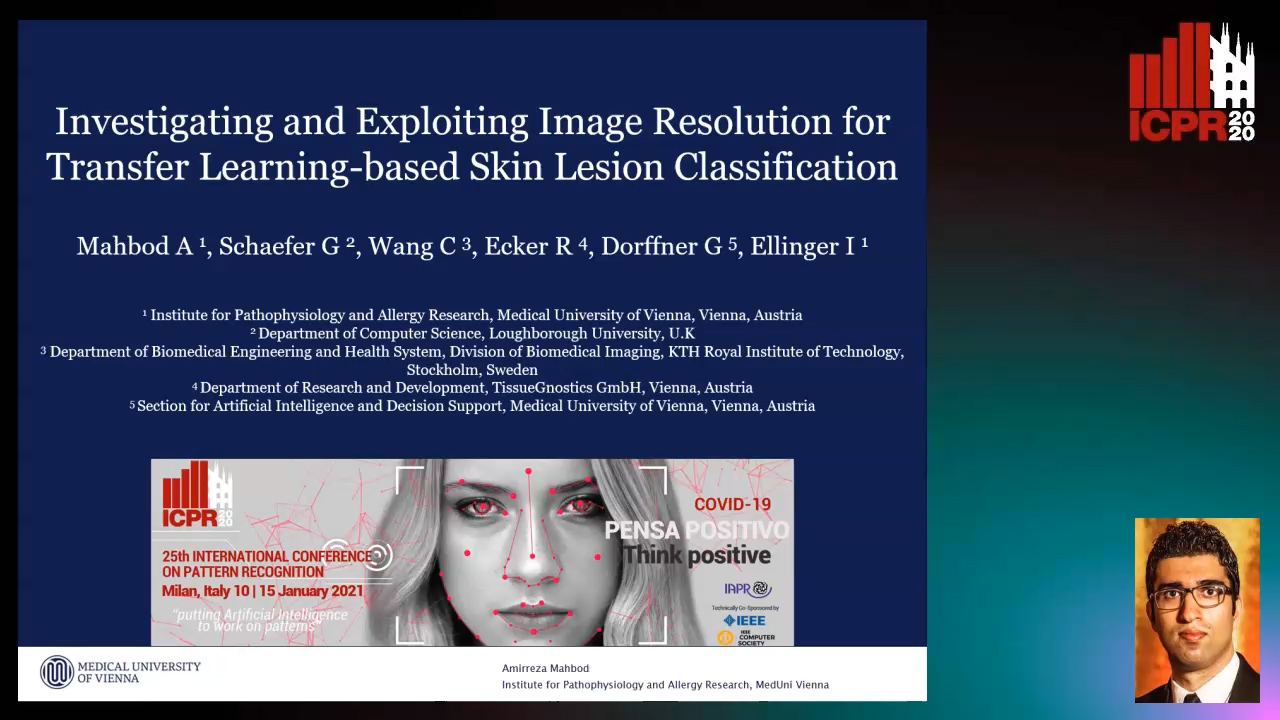
Auto-TLDR; Fine-tuned Neural Networks for Skin Lesion Classification Using Dermoscopic Images
Abstract Slides Poster Similar
Bridging the Gap between Natural and Medical Images through Deep Colorization
Lia Morra, Luca Piano, Fabrizio Lamberti, Tatiana Tommasi
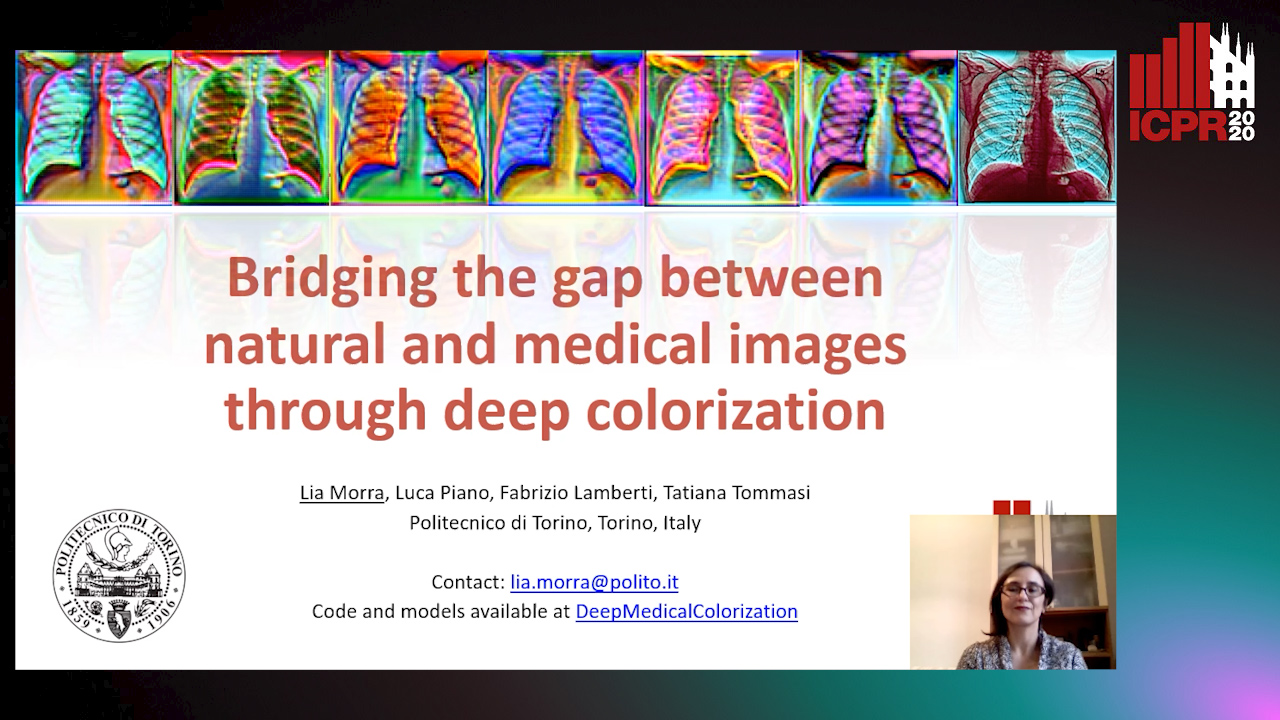
Auto-TLDR; Transfer Learning for Diagnosis on X-ray Images Using Color Adaptation
Abstract Slides Poster Similar
Inception Based Deep Learning Architecture for Tuberculosis Screening of Chest X-Rays
Dipayan Das, K.C. Santosh, Umapada Pal
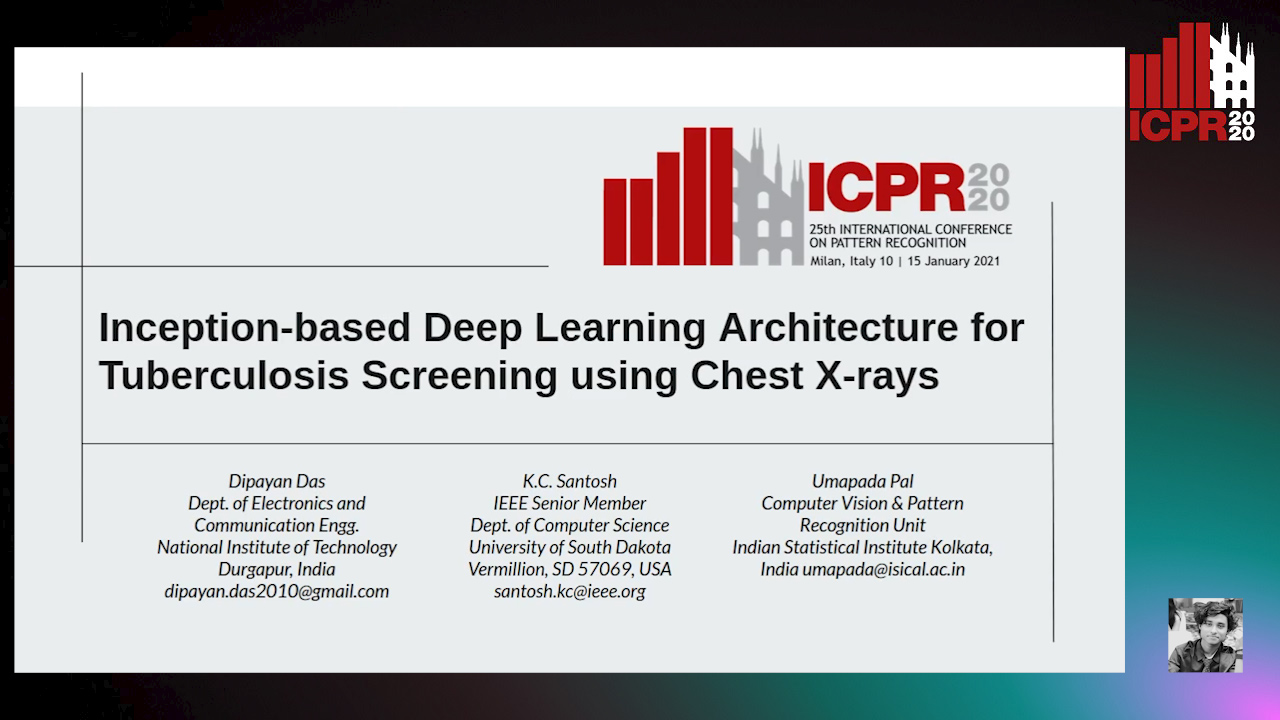
Auto-TLDR; End to End CNN-based Chest X-ray Screening for Tuberculosis positive patients in the severely resource constrained regions of the world
Abstract Slides Poster Similar
Transfer Learning through Weighted Loss Function and Group Normalization for Vessel Segmentation from Retinal Images
Abdullah Sarhan, Jon Rokne, Reda Alhajj, Andrew Crichton
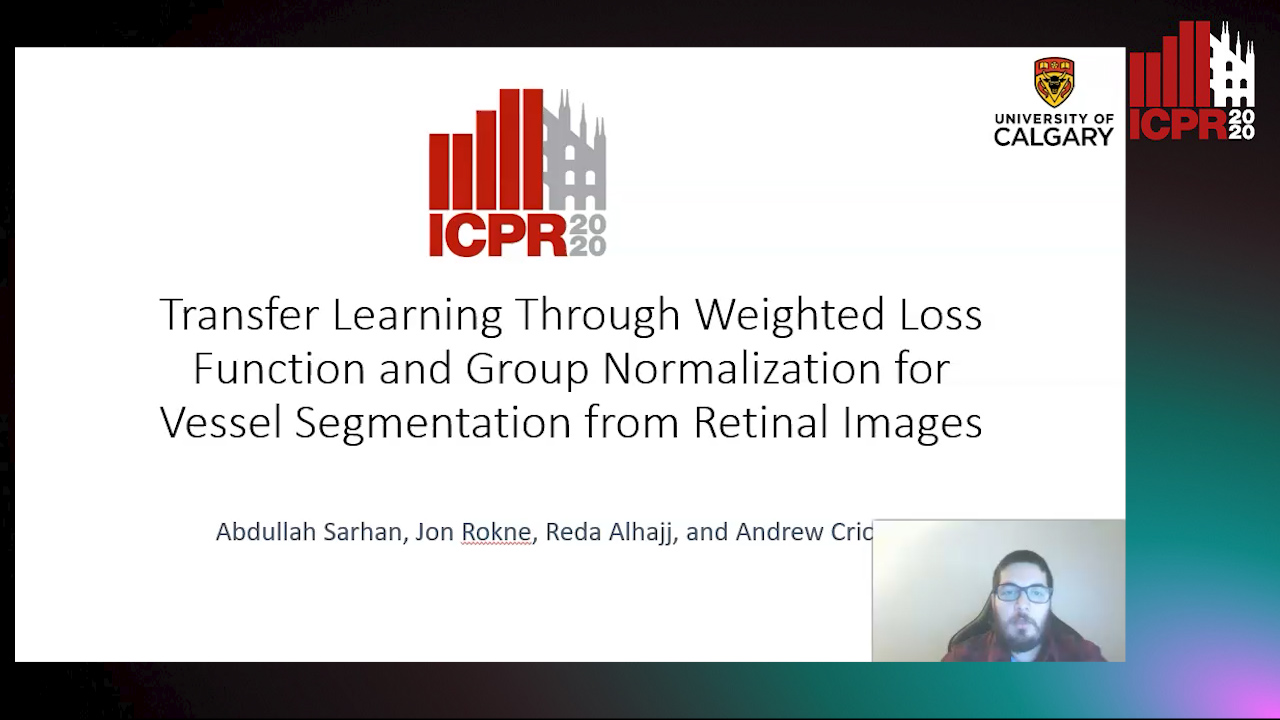
Auto-TLDR; Deep Learning for Segmentation of Blood Vessels in Retinal Images
Abstract Slides Poster Similar
Robust Localization of Retinal Lesions Via Weakly-Supervised Learning
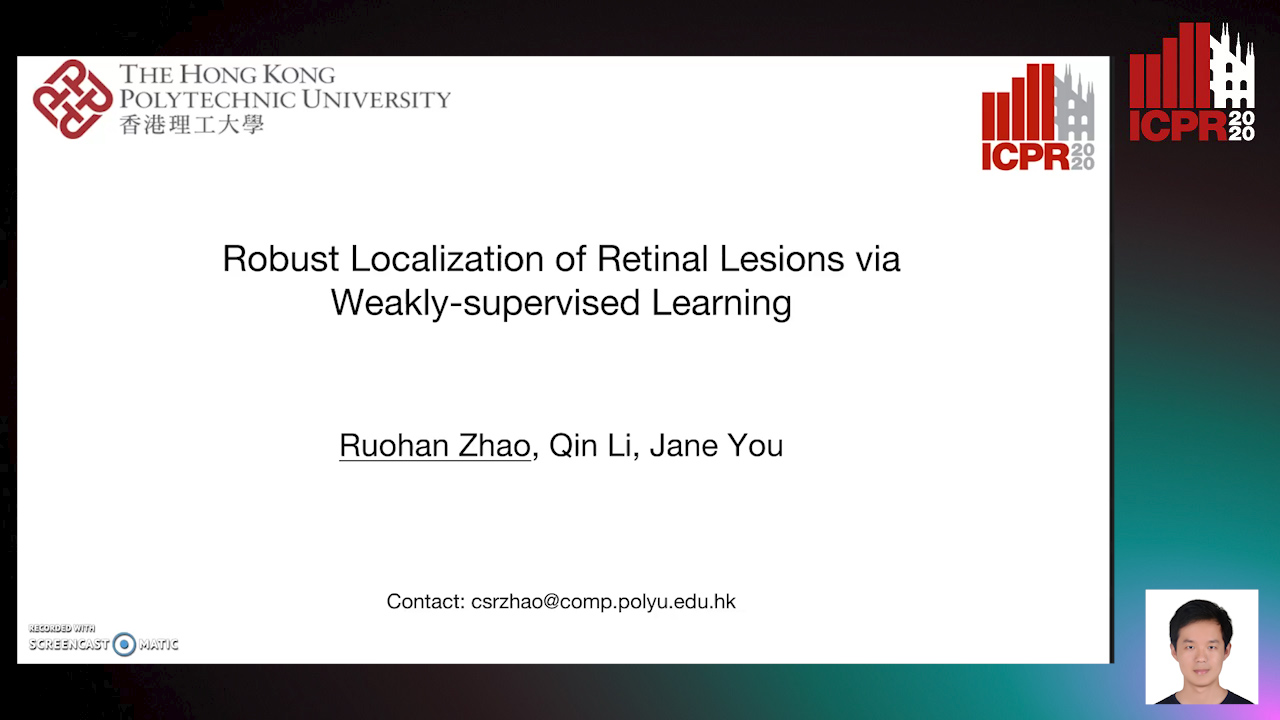
Auto-TLDR; Weakly Learning of Lesions in Fundus Images Using Multi-level Feature Maps and Classification Score
Abstract Slides Poster Similar
Semi-Supervised Generative Adversarial Networks with a Pair of Complementary Generators for Retinopathy Screening
Yingpeng Xie, Qiwei Wan, Hai Xie, En-Leng Tan, Yanwu Xu, Baiying Lei

Auto-TLDR; Generative Adversarial Networks for Retinopathy Diagnosis via Fundus Images
Abstract Slides Poster Similar
Improving Model Accuracy for Imbalanced Image Classification Tasks by Adding a Final Batch Normalization Layer: An Empirical Study
Veysel Kocaman, Ofer M. Shir, Thomas Baeck

Auto-TLDR; Exploiting Batch Normalization before the Output Layer in Deep Learning for Minority Class Detection in Imbalanced Data Sets
Abstract Slides Poster Similar
A Comparison of Neural Network Approaches for Melanoma Classification
Maria Frasca, Michele Nappi, Michele Risi, Genoveffa Tortora, Alessia Auriemma Citarella

Auto-TLDR; Classification of Melanoma Using Deep Neural Network Methodologies
Abstract Slides Poster Similar
Learn to Segment Retinal Lesions and Beyond
Qijie Wei, Xirong Li, Weihong Yu, Xiao Zhang, Yongpeng Zhang, Bojie Hu, Bin Mo, Di Gong, Ning Chen, Dayong Ding, Youxin Chen
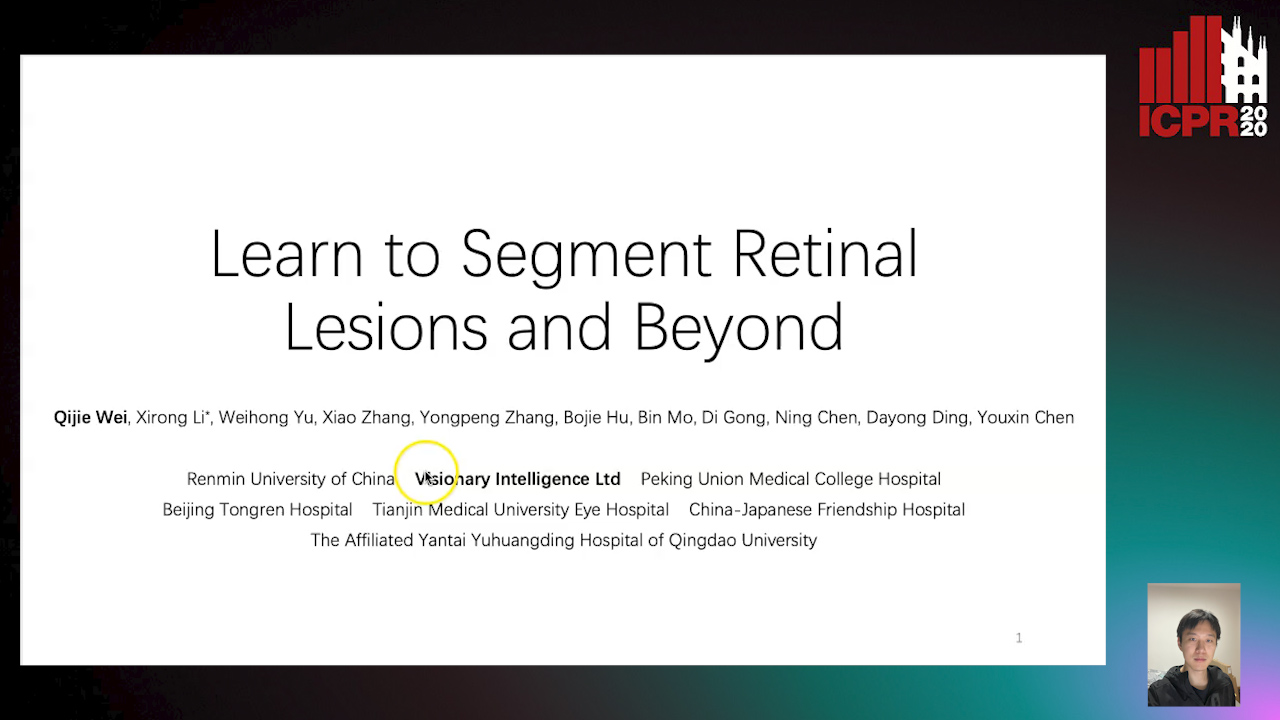
Auto-TLDR; Multi-task Lesion Segmentation and Disease Classification for Diabetic Retinopathy Grading
Automatic Semantic Segmentation of Structural Elements related to the Spinal Cord in the Lumbar Region by Using Convolutional Neural Networks
Jhon Jairo Sáenz Gamboa, Maria De La Iglesia-Vaya, Jon Ander Gómez

Auto-TLDR; Semantic Segmentation of Lumbar Spine Using Convolutional Neural Networks
Abstract Slides Poster Similar
Planar 3D Transfer Learning for End to End Unimodal MRI Unbalanced Data Segmentation
Martin Kolarik, Radim Burget, Carlos M. Travieso-Gonzalez, Jan Kocica

Auto-TLDR; Planar 3D Res-U-Net Network for Unbalanced 3D Image Segmentation using Fluid Attenuation Inversion Recover
Confidence Calibration for Deep Renal Biopsy Immunofluorescence Image Classification
Federico Pollastri, Juan Maroñas, Federico Bolelli, Giulia Ligabue, Roberto Paredes, Riccardo Magistroni, Costantino Grana

Auto-TLDR; A Probabilistic Convolutional Neural Network for Immunofluorescence Classification in Renal Biopsy
Abstract Slides Poster Similar
Which are the factors affecting the performance of audio surveillance systems?
Antonio Greco, Antonio Roberto, Alessia Saggese, Mario Vento

Auto-TLDR; Sound Event Recognition Using Convolutional Neural Networks and Visual Representations on MIVIA Audio Events
Deep Transfer Learning for Alzheimer’s Disease Detection
Nicole Cilia, Claudio De Stefano, Francesco Fontanella, Claudio Marrocco, Mario Molinara, Alessandra Scotto Di Freca

Auto-TLDR; Automatic Detection of Handwriting Alterations for Alzheimer's Disease Diagnosis using Dynamic Features
Abstract Slides Poster Similar
Supporting Skin Lesion Diagnosis with Content-Based Image Retrieval
Stefano Allegretti, Federico Bolelli, Federico Pollastri, Sabrina Longhitano, Giovanni Pellacani, Costantino Grana
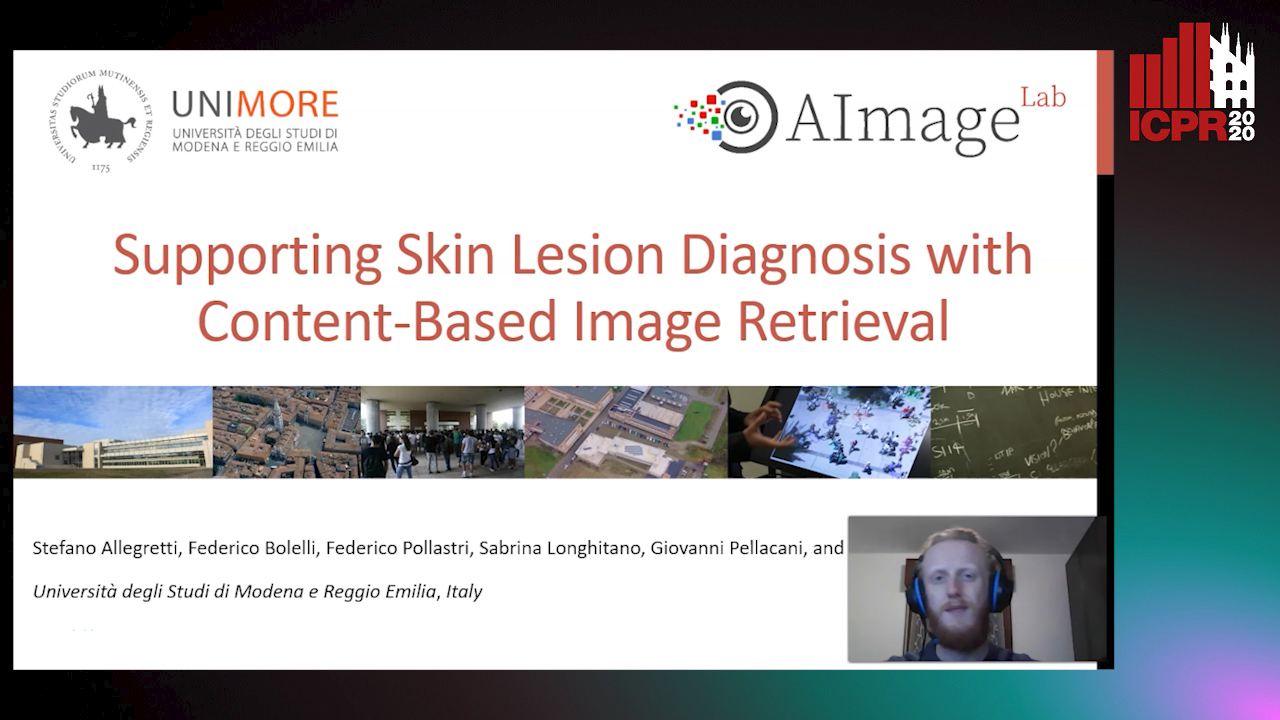
Auto-TLDR; Skin Images Retrieval Using Convolutional Neural Networks for Skin Lesion Classification and Segmentation
Abstract Slides Poster Similar
PCANet: Pyramid Context-Aware Network for Retinal Vessel Segmentation
Yi Zhang, Yixuan Chen, Kai Zhang
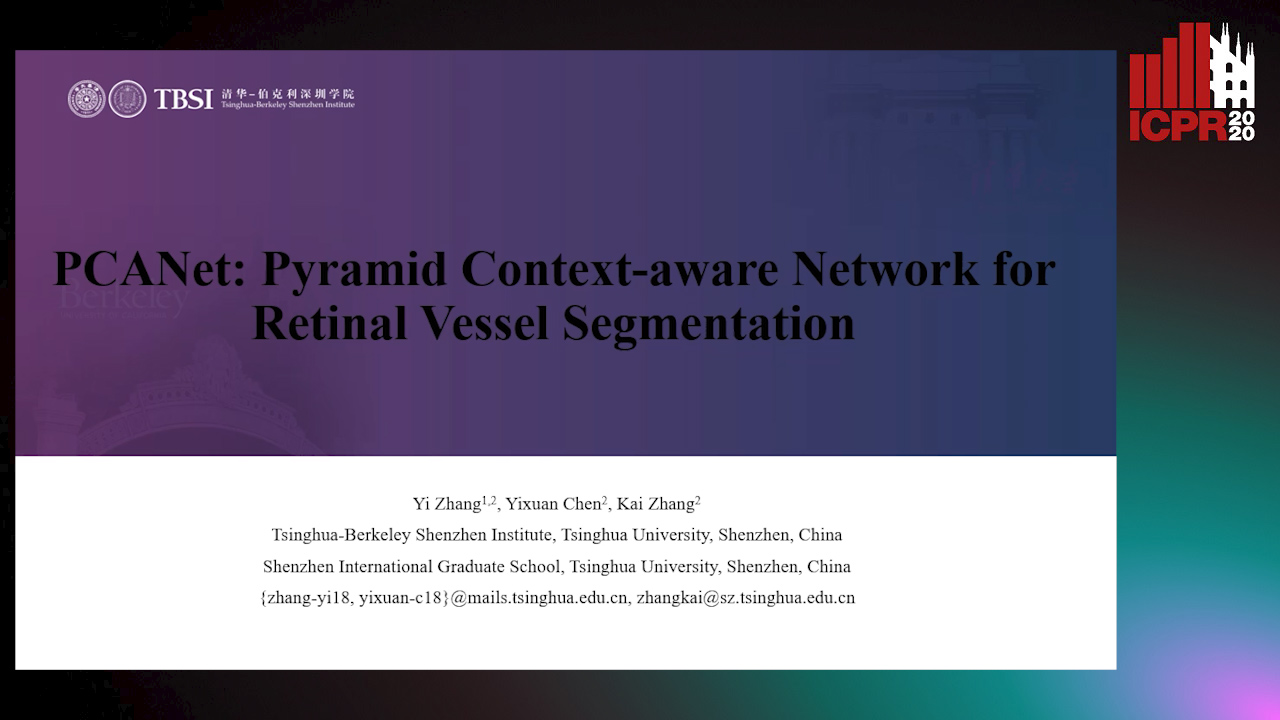
Auto-TLDR; PCANet: Adaptive Context-Aware Network for Automated Retinal Vessel Segmentation
Abstract Slides Poster Similar
Weight Estimation from an RGB-D Camera in Top-View Configuration
Marco Mameli, Marina Paolanti, Nicola Conci, Filippo Tessaro, Emanuele Frontoni, Primo Zingaretti

Auto-TLDR; Top-View Weight Estimation using Deep Neural Networks
Abstract Slides Poster Similar
Trainable Spectrally Initializable Matrix Transformations in Convolutional Neural Networks
Michele Alberti, Angela Botros, Schuetz Narayan, Rolf Ingold, Marcus Liwicki, Mathias Seuret

Auto-TLDR; Trainable and Spectrally Initializable Matrix Transformations for Neural Networks
Abstract Slides Poster Similar
Enhancing Semantic Segmentation of Aerial Images with Inhibitory Neurons
Ihsan Ullah, Sean Reilly, Michael Madden

Auto-TLDR; Lateral Inhibition in Deep Neural Networks for Object Recognition and Semantic Segmentation
Abstract Slides Poster Similar
BAT Optimized CNN Model Identifies Water Stress in Chickpea Plant Shoot Images
Shiva Azimi, Taranjit Kaur, Tapan Gandhi
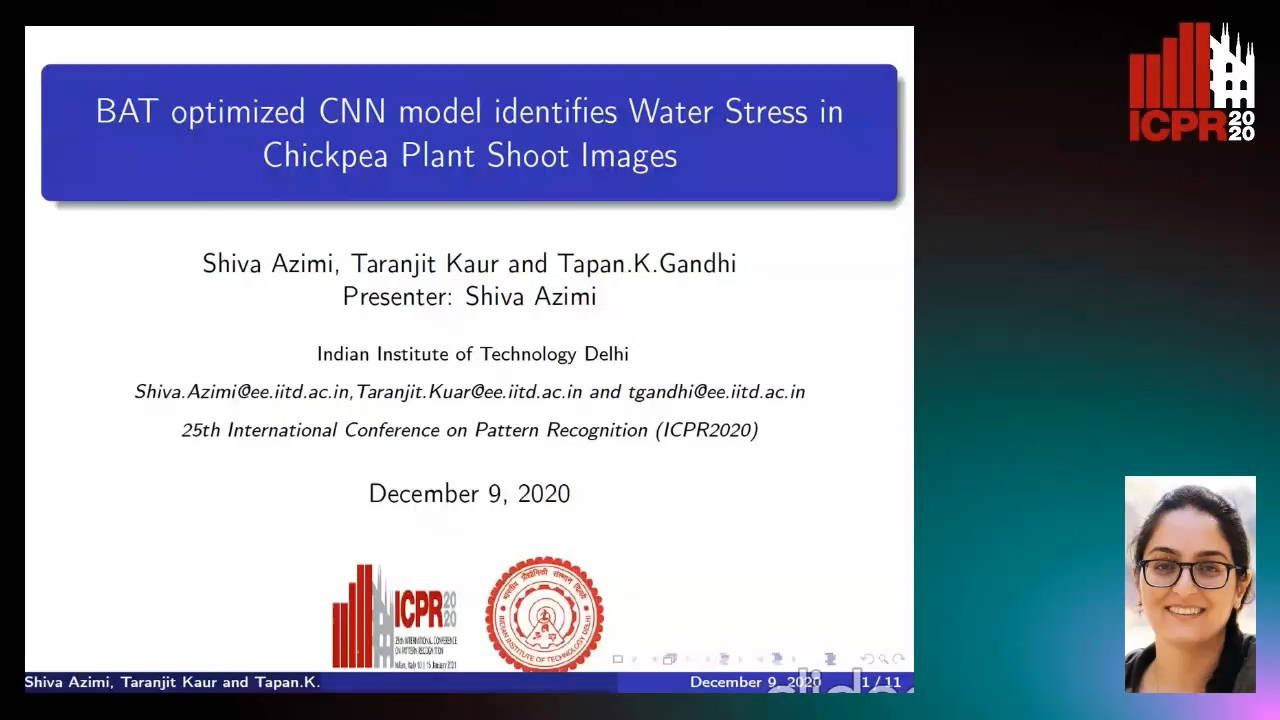
Auto-TLDR; BAT Optimized ResNet-18 for Stress Classification of chickpea shoot images under water deficiency
Abstract Slides Poster Similar
Dual Stream Network with Selective Optimization for Skin Disease Recognition in Consumer Grade Images
Krishnam Gupta, Jaiprasad Rampure, Monu Krishnan, Ajit Narayanan, Nikhil Narayan

Auto-TLDR; A Deep Network Architecture for Skin Disease Localisation and Classification on Consumer Grade Images
Abstract Slides Poster Similar
Rethinking of Deep Models Parameters with Respect to Data Distribution
Shitala Prasad, Dongyun Lin, Yiqun Li, Sheng Dong, Zaw Min Oo

Auto-TLDR; A progressive stepwise training strategy for deep neural networks
Abstract Slides Poster Similar
Conditional Multi-Task Learning for Plant Disease Identification
Sue Han Lee, Herve Goëau, Pierre Bonnet, Alexis Joly

Auto-TLDR; A conditional multi-task learning approach for plant disease identification
Abstract Slides Poster Similar
A Deep Learning Approach for the Segmentation of Myocardial Diseases
Khawala Brahim, Abdull Qayyum, Alain Lalande, Arnaud Boucher, Anis Sakly, Fabrice Meriaudeau

Auto-TLDR; Segmentation of Myocardium Infarction Using Late GADEMRI and SegU-Net
Abstract Slides Poster Similar
Deep Multiple Instance Learning with Spatial Attention for ROP Case Classification, Instance Selection and Abnormality Localization
Xirong Li, Wencui Wan, Yang Zhou, Jianchun Zhao, Qijie Wei, Junbo Rong, Pengyi Zhou, Limin Xu, Lijuan Lang, Yuying Liu, Chengzhi Niu, Dayong Ding, Xuemin Jin
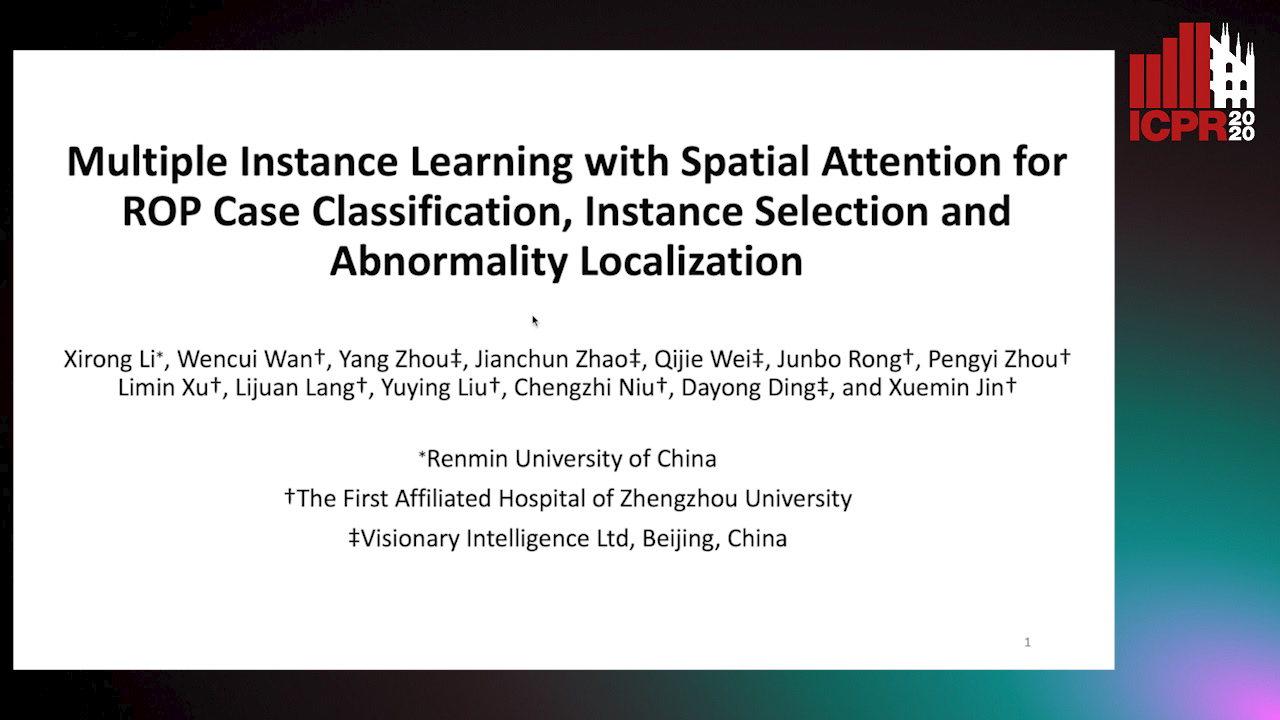
Auto-TLDR; MIL-SA: Deep Multiple Instance Learning for Automated Screening of Retinopathy of Prematurity
Multimodal Side-Tuning for Document Classification
Stefano Zingaro, Giuseppe Lisanti, Maurizio Gabbrielli

Auto-TLDR; Side-tuning for Multimodal Document Classification
Abstract Slides Poster Similar
Dealing with Scarce Labelled Data: Semi-Supervised Deep Learning with Mix Match for Covid-19 Detection Using Chest X-Ray Images
Saúl Calderón Ramirez, Raghvendra Giri, Shengxiang Yang, Armaghan Moemeni, Mario Umaña, David Elizondo, Jordina Torrents-Barrena, Miguel A. Molina-Cabello

Auto-TLDR; Semi-supervised Deep Learning for Covid-19 Detection using Chest X-rays
Abstract Slides Poster Similar
Prediction of Obstructive Coronary Artery Disease from Myocardial Perfusion Scintigraphy using Deep Neural Networks
Ida Arvidsson, Niels Christian Overgaard, Miguel Ochoa Figueroa, Jeronimo Rose, Anette Davidsson, Kalle Åström, Anders Heyden
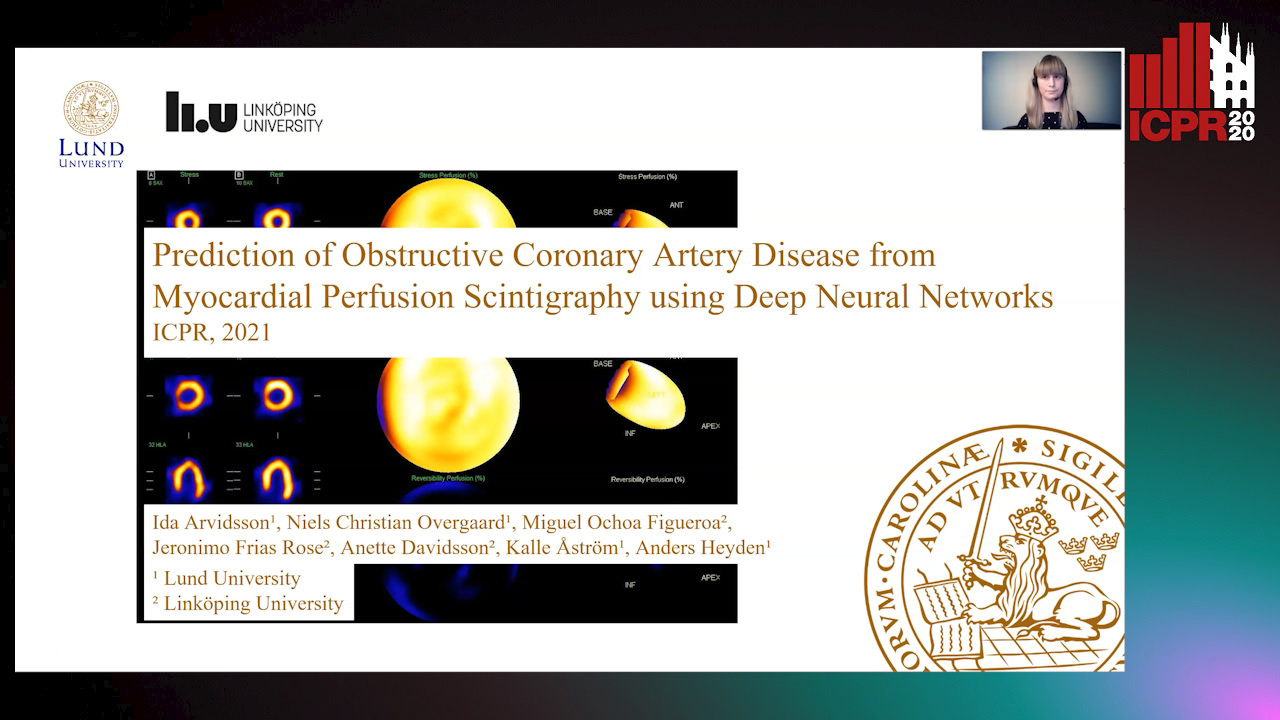
Auto-TLDR; A Deep Learning Algorithm for Multi-label Classification of Myocardial Perfusion Scintigraphy for Stable Ischemic Heart Disease
Abstract Slides Poster Similar
The Color Out of Space: Learning Self-Supervised Representations for Earth Observation Imagery
Stefano Vincenzi, Angelo Porrello, Pietro Buzzega, Marco Cipriano, Pietro Fronte, Roberto Cuccu, Carla Ippoliti, Annamaria Conte, Simone Calderara

Auto-TLDR; Satellite Image Representation Learning for Remote Sensing
Abstract Slides Poster Similar
Self-Supervised Learning for Astronomical Image Classification
Ana Martinazzo, Mateus Espadoto, Nina S. T. Hirata
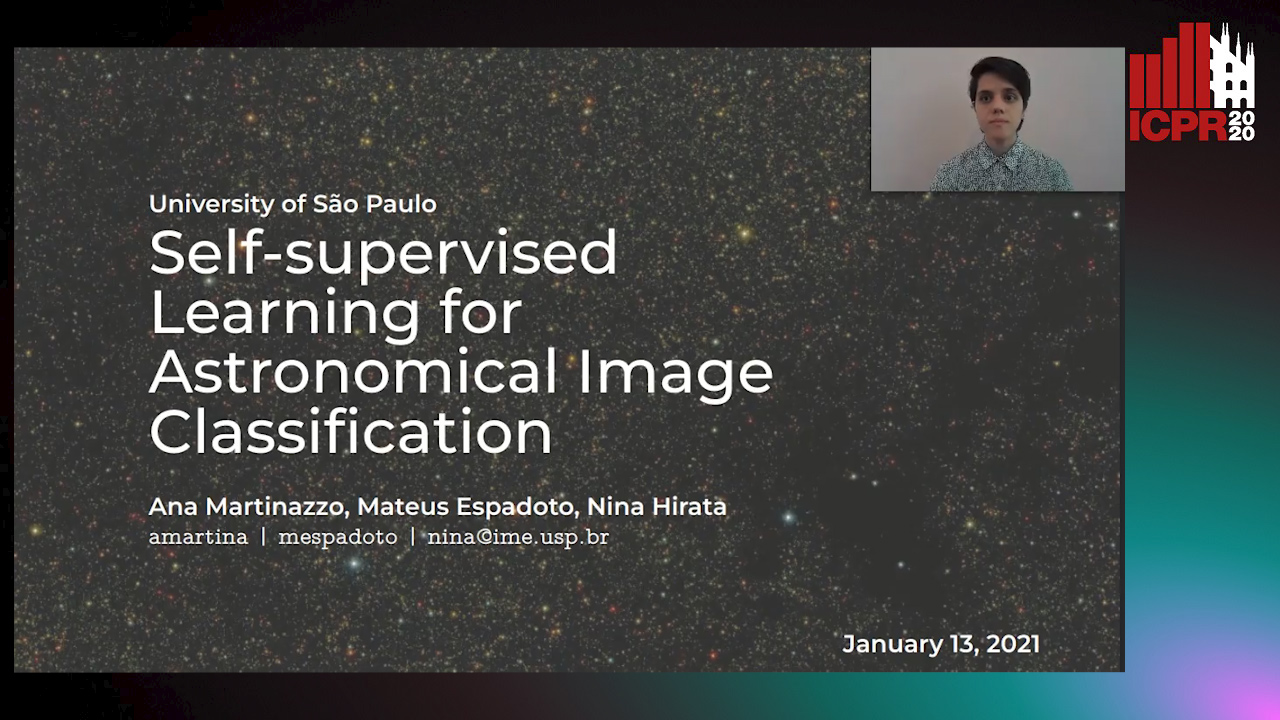
Auto-TLDR; Unlabeled Astronomical Images for Deep Neural Network Pre-training
Abstract Slides Poster Similar
Deep Learning-Based Type Identification of Volumetric MRI Sequences
Jean Pablo De Mello, Thiago Paixão, Rodrigo Berriel, Mauricio Reyes, Alberto F. De Souza, Claudine Badue, Thiago Oliveira-Santos
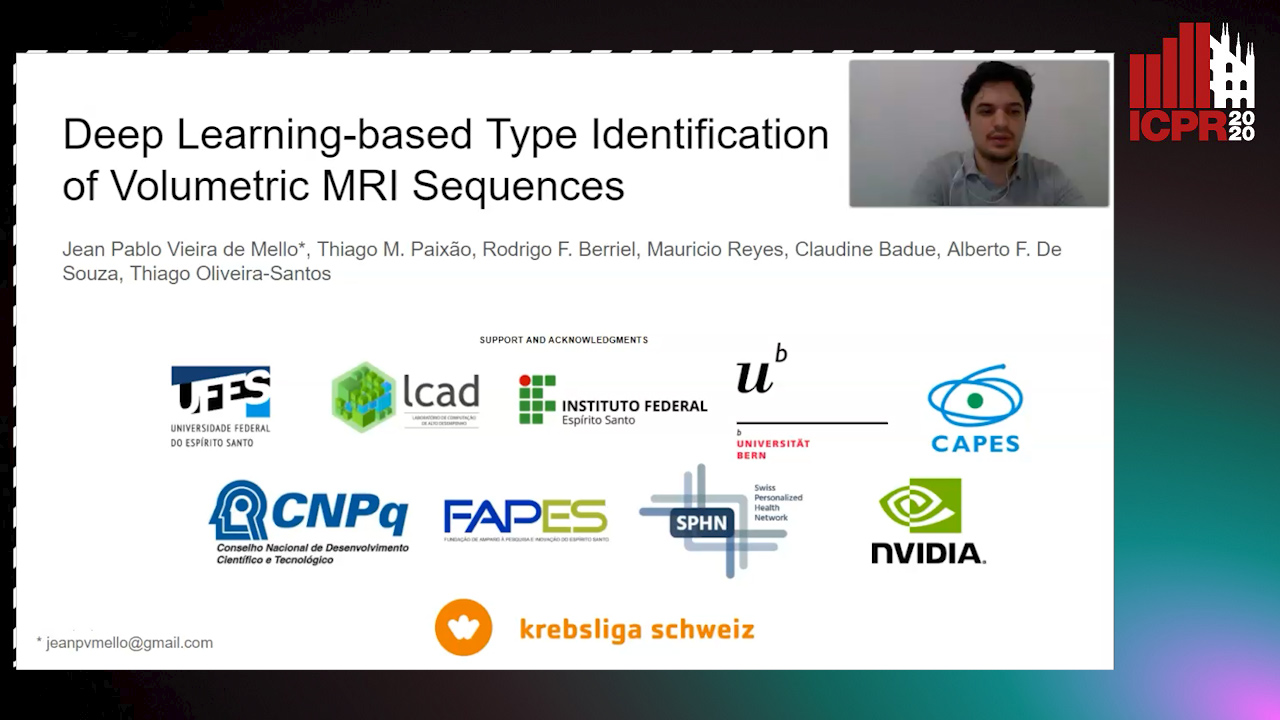
Auto-TLDR; Deep Learning for Brain MRI Sequences Identification Using Convolutional Neural Network
Abstract Slides Poster Similar
Automatic Tuberculosis Detection Using Chest X-Ray Analysis with Position Enhanced Structural Information
Hermann Jepdjio Nkouanga, Szilard Vajda

Auto-TLDR; Automatic Chest X-ray Screening for Tuberculosis in Rural Population using Localized Region on Interest
Abstract Slides Poster Similar
OCT Image Segmentation Using NeuralArchitecture Search and SRGAN
Saba Heidari, Omid Dehzangi, Nasser M. Nasarabadi, Ali Rezai

Auto-TLDR; Automatic Segmentation of Retinal Layers in Optical Coherence Tomography using Neural Architecture Search
Neuron-Based Network Pruning Based on Majority Voting
Ali Alqahtani, Xianghua Xie, Ehab Essa, Mark W. Jones

Auto-TLDR; Large-Scale Neural Network Pruning using Majority Voting
Abstract Slides Poster Similar
A Systematic Investigation on End-To-End Deep Recognition of Grocery Products in the Wild
Marco Leo, Pierluigi Carcagni, Cosimo Distante
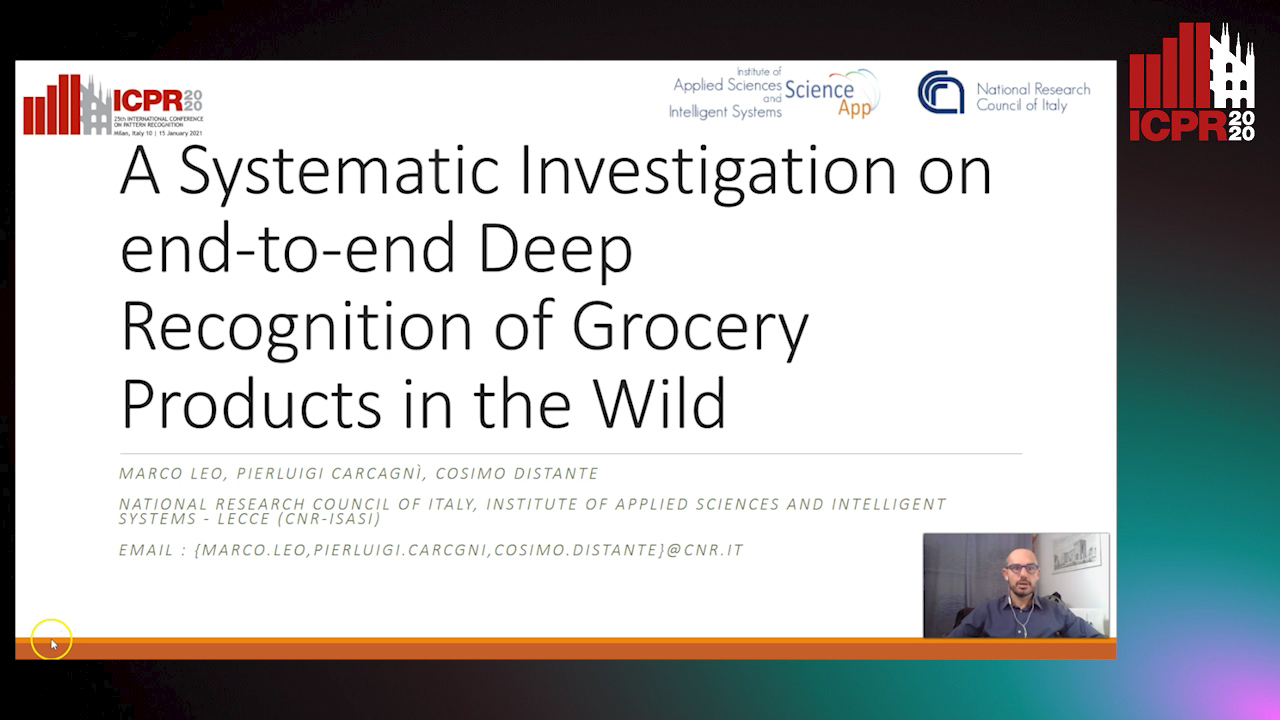
Auto-TLDR; Automatic Recognition of Products on grocery shelf images using Convolutional Neural Networks
Abstract Slides Poster Similar
A Lumen Segmentation Method in Ureteroscopy Images Based on a Deep Residual U-Net Architecture
Jorge Lazo, Marzullo Aldo, Sara Moccia, Michele Catellani, Benoit Rosa, Elena De Momi, Michel De Mathelin, Francesco Calimeri

Auto-TLDR; A Deep Neural Network for Ureteroscopy with Residual Units
Abstract Slides Poster Similar
Deep Recurrent-Convolutional Model for AutomatedSegmentation of Craniomaxillofacial CT Scans
Francesca Murabito, Simone Palazzo, Federica Salanitri Proietto, Francesco Rundo, Ulas Bagci, Daniela Giordano, Rosalia Leonardi, Concetto Spampinato

Auto-TLDR; Automated Segmentation of Anatomical Structures in Craniomaxillofacial CT Scans using Fully Convolutional Deep Networks
Abstract Slides Poster Similar
Facial Expression Recognition Using Residual Masking Network
Luan Pham, Vu Huynh, Tuan Anh Tran
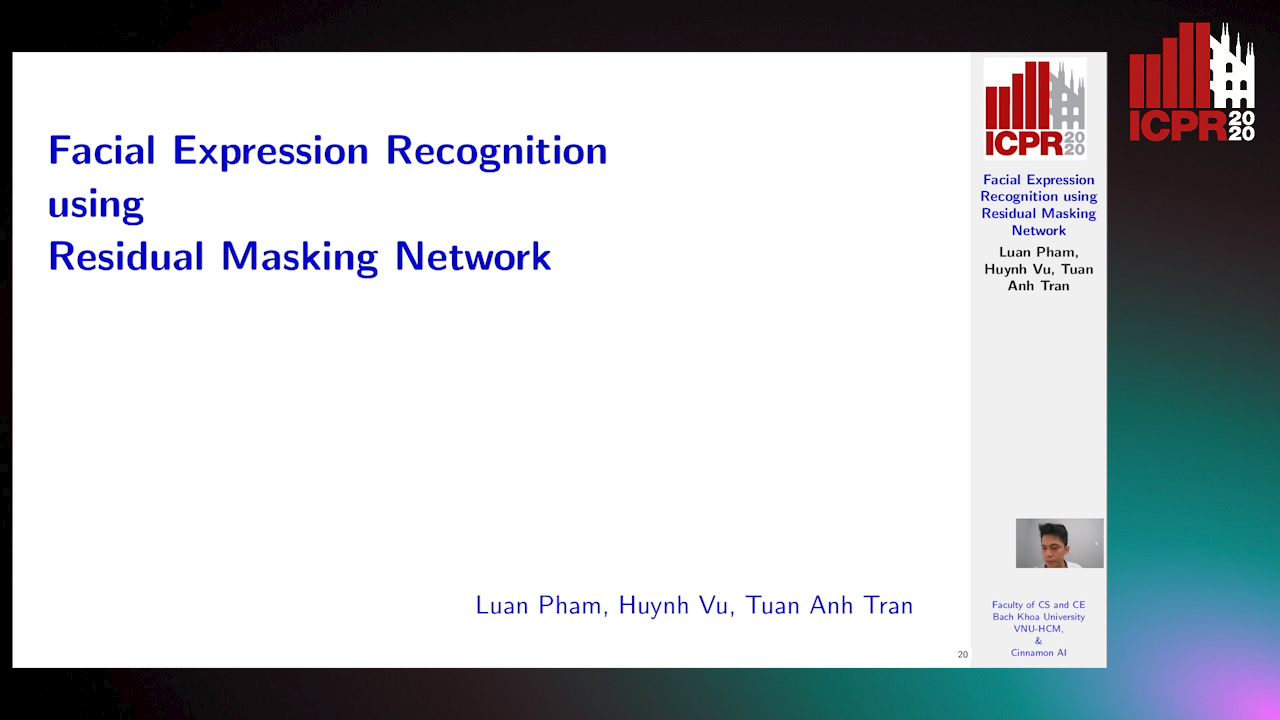
Auto-TLDR; Deep Residual Masking for Automatic Facial Expression Recognition
Abstract Slides Poster Similar
Merged 1D-2D Deep Convolutional Neural Networks for Nerve Detection in Ultrasound Images
Mohammad Alkhatib, Adel Hafiane, Pierre Vieyres

Auto-TLDR; A Deep Neural Network for Deep Neural Networks to Detect Median Nerve in Ultrasound-Guided Regional Anesthesia
Abstract Slides Poster Similar
Deep Learning in the Ultrasound Evaluation of Neonatal Respiratory Status
Michela Gravina, Diego Gragnaniello, Giovanni Poggi, Luisa Verdoliva, Carlo Sansone, Iuri Corsini, Carlo Dani, Fabio Meneghin, Gianluca Lista, Salvatore Aversa, Migliaro Migliaro, Raimondi Francesco

Auto-TLDR; Lung Ultrasound Imaging with Deep Learning Networks and Training Strategies: An Analysis and Adaptation
Abstract Slides Poster Similar
VPU Specific CNNs through Neural Architecture Search
Ciarán Donegan, Hamza Yous, Saksham Sinha, Jonathan Byrne

Auto-TLDR; Efficient Convolutional Neural Networks for Edge Devices using Neural Architecture Search
Abstract Slides Poster Similar
Documents Counterfeit Detection through a Deep Learning Approach
Darwin Danilo Saire Pilco, Salvatore Tabbone
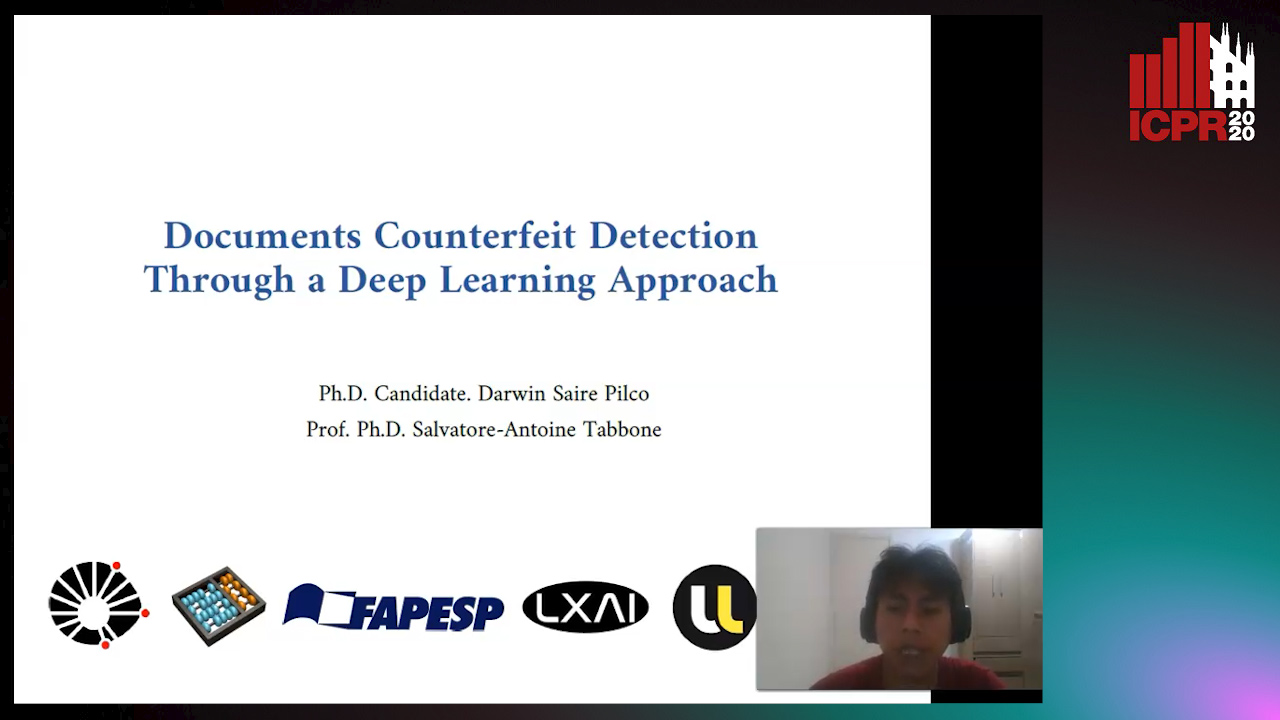
Auto-TLDR; End-to-End Learning for Counterfeit Documents Detection using Deep Neural Network
Abstract Slides Poster Similar
SA-UNet: Spatial Attention U-Net for Retinal Vessel Segmentation
Changlu Guo, Marton Szemenyei, Yugen Yi, Wenle Wang, Buer Chen, Changqi Fan
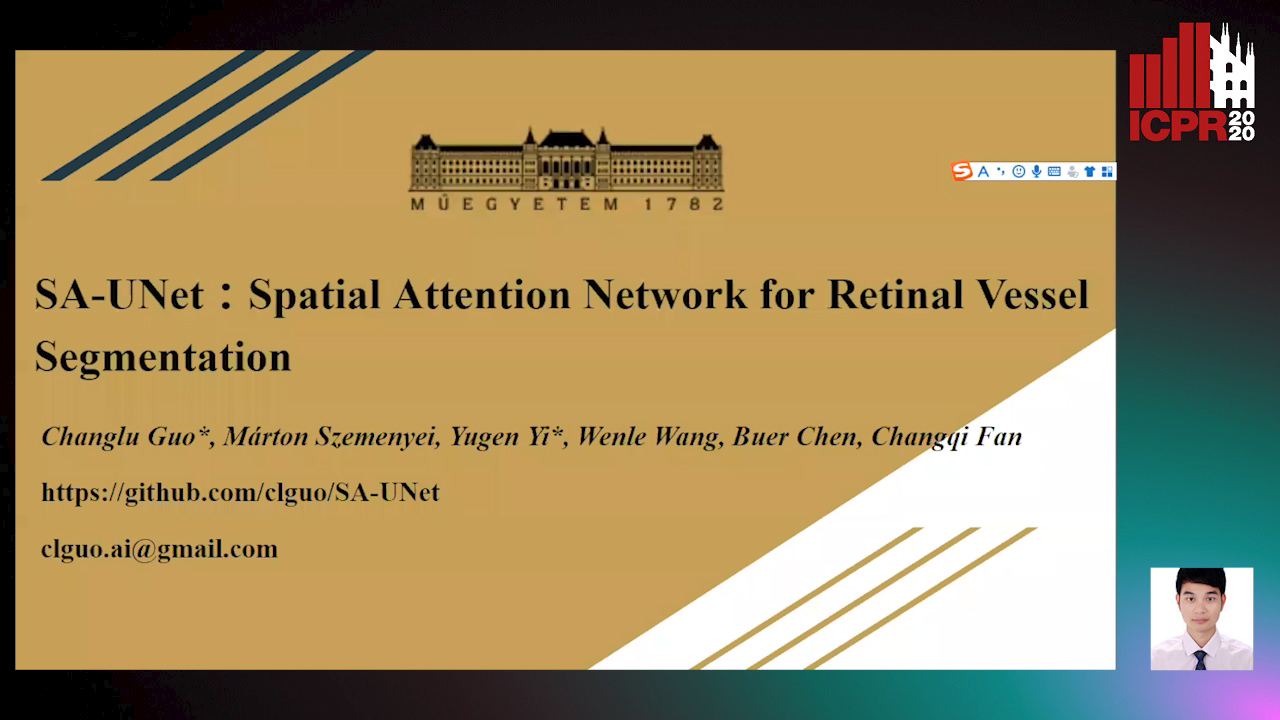
Auto-TLDR; Spatial Attention U-Net for Segmentation of Retinal Blood Vessels
Abstract Slides Poster Similar
A Versatile Crack Inspection Portable System Based on Classifier Ensemble and Controlled Illumination
Milind Gajanan Padalkar, Carlos Beltran-Gonzalez, Matteo Bustreo, Alessio Del Bue, Vittorio Murino
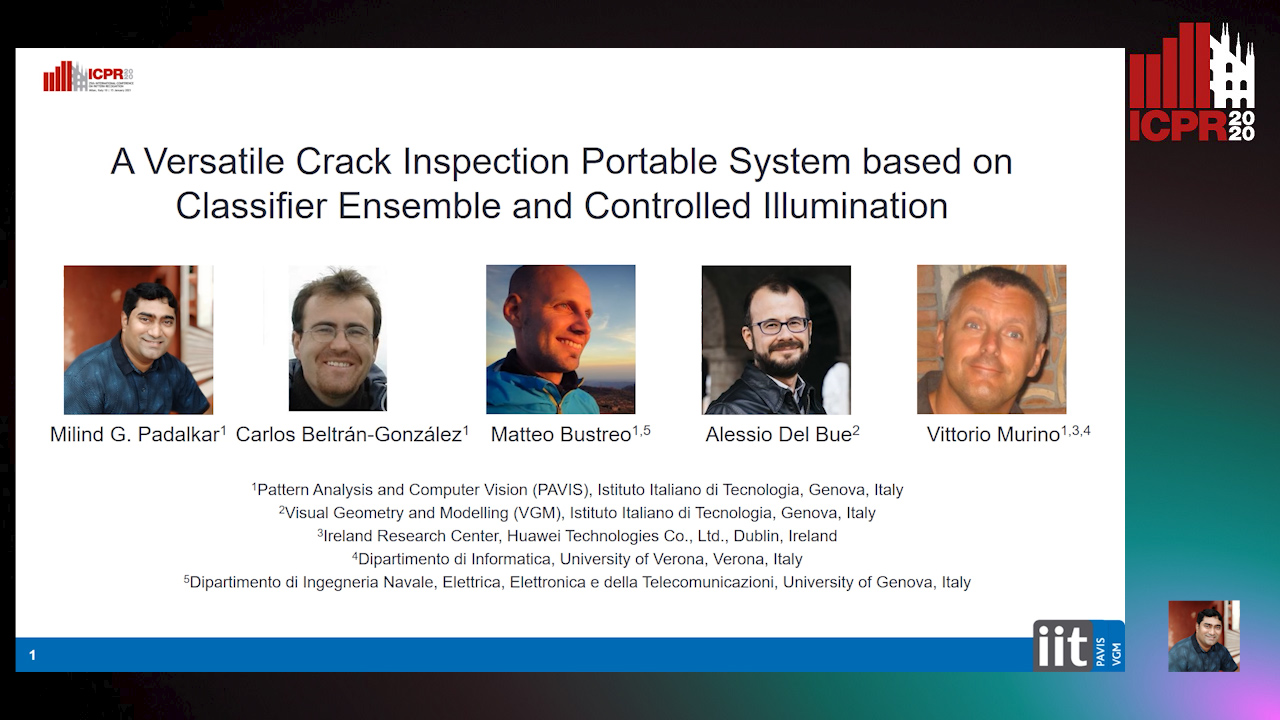
Auto-TLDR; Lighting Conditions for Crack Detection in Ceramic Tile
Abstract Slides Poster Similar
LiNet: A Lightweight Network for Image Super Resolution
Armin Mehri, Parichehr Behjati Ardakani, Angel D. Sappa

Auto-TLDR; LiNet: A Compact Dense Network for Lightweight Super Resolution
Abstract Slides Poster Similar
Stage-Wise Neural Architecture Search
Artur Jordão, Fernando Akio Yamada, Maiko Lie, William Schwartz
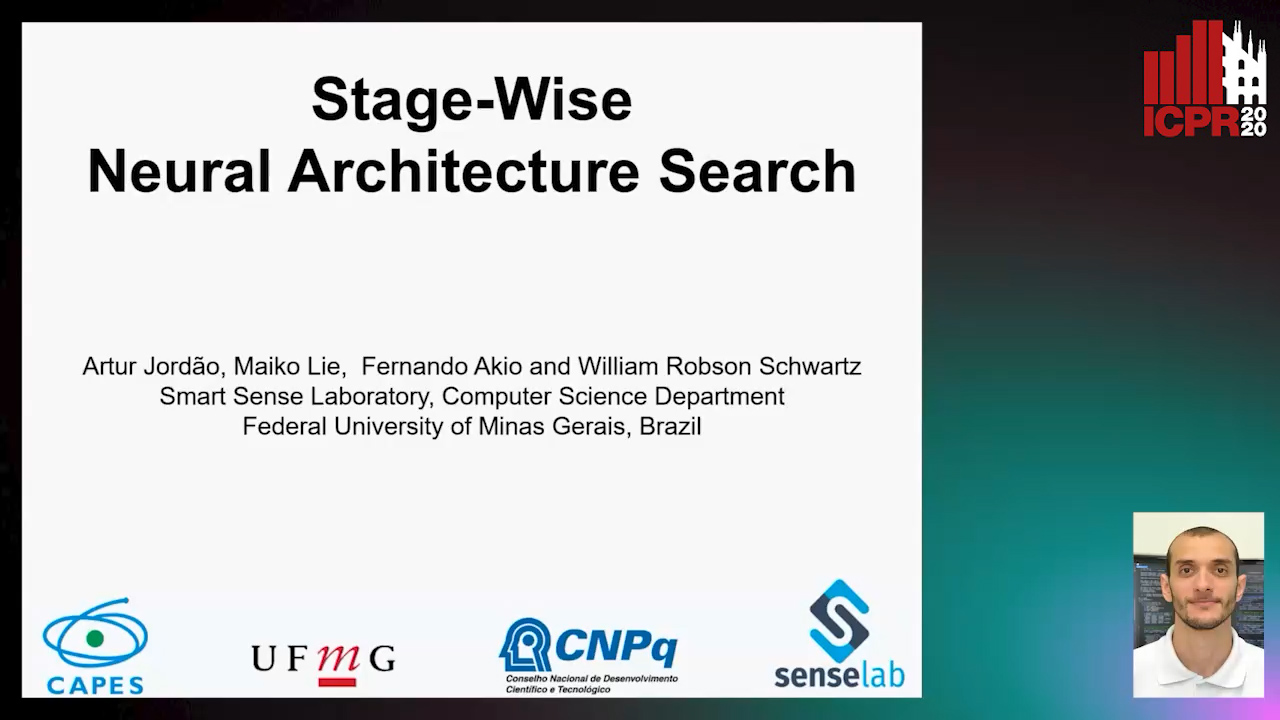
Auto-TLDR; Efficient Neural Architecture Search for Deep Convolutional Networks
Abstract Slides Poster Similar
Contextual Classification Using Self-Supervised Auxiliary Models for Deep Neural Networks
Sebastian Palacio, Philipp Engler, Jörn Hees, Andreas Dengel

Auto-TLDR; Self-Supervised Autogenous Learning for Deep Neural Networks
Abstract Slides Poster Similar